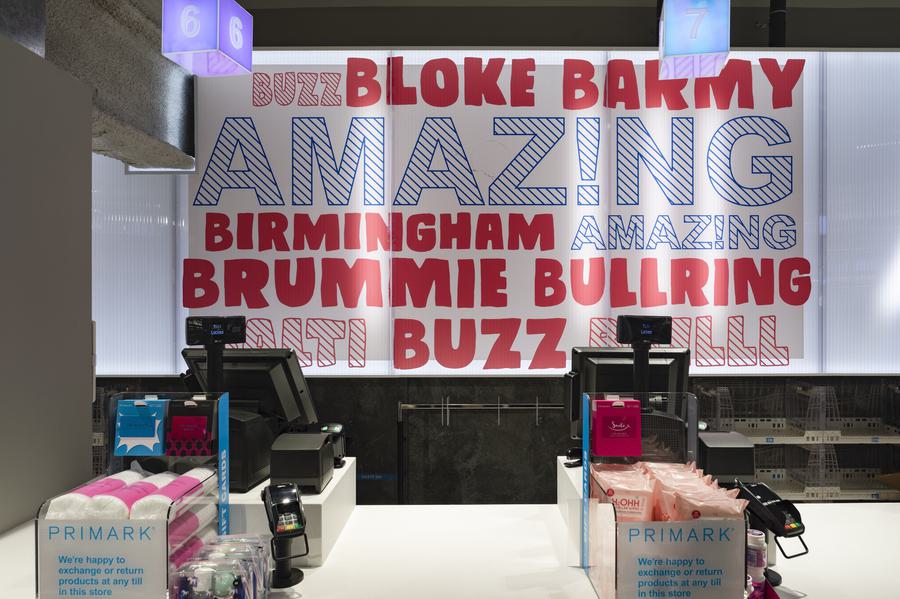When big brands act small and small brands think big
There’s inspiration to be found in brands of all shapes and sizes.


There’s inspiration to be found in brands of all shapes and sizes.


Brands have a lot to gain by not acting their size and many are borrowing traits from the other end of the scales. Over the past year we’ve worked with a number of independent 'smaller' brands, such as CH, Sterling Home, Skopes and Joe Browns and have witnessed this behaviour up close. We're also seeing the 'larger' brands we work with look to the local, independent and start-up offers for inspiration.
A number of factors are at play – shifting consumer attitudes, better leasing opportunities, and e-commerce and social media enabling small businesses to reach wider audiences. Through this we’re seeing more and more 'small' brands taking on established players in the market. It’s made for an interesting mix of new experiences as independents and start-ups rise and larger-scale brands innovate to adapt and behave in a more local, independent or even start-up fashion. So what’s the reason behind this behaviour?
Credibility is often equated with size
Winning over consumer trust is a key driver. In an age where start-ups and small businesses are competing against both established businesses and each other, consumers have a lot of choice. Brands need to look credible to reassure customers of their product or service quality - especially in the case of newer businesses that lack years of experience - and this credibility is often equated with a perception of scale.
Authority and expertise are other key points. Established and ofter larger brands have been perceived as leaders - both in their markets and in their offers. While there’s no question that an independent, smaller brand or start-up can be and often is an expert in its field, it doesn’t hurt to emulate bigger brands to appear even more authoritative. We recently worked with CH, an independent health and beauty brand in Ireland, to reimagine its brand and experience. CH has been part of the local community for over 50 years and is a well-loved brand with knowledgeable staff and forward-thinking initiatives. However, its identity and store experience needed a refresh in order to communicate its expertise and status and to keep up with changes in the wellness and beauty sectors, including new competition. We revitalised the brand to re-establish CH as the go-to destination for all things beauty and wellness, putting the brand on the same level as top-tier department stores when it comes to experience.
Conveying confidence through branding and campaigns also allows smaller brands to square up to bigger brands. BrewDog’s brash tone of voice might not be to everyone’s taste, but the brand has garnered enough interest from consumers to make it the fastest-growing food and drinks producer in Britain. And who can forget Dollar Shave Club’s bold, hilarious commercial that went viral and helped the brand compete with Gillette?

Like larger retailers, smaller brands are becoming experts on providing customers with things to do, not just buy. We recently worked with Sterling Home in Scotland, rebranding it from Sterling Furniture to encompass the brand’s full lifestyle offering. The store redesign sets Sterling Home apart from other ‘Big Box’ furniture retailers, taking an experience-led approach compared to a product-led one, and a new in-store cafe allows customers to relax between shopping, transforming the independent retailer into a local destination.

Smaller businesses appear more personal and passionate
While small, local, independent or start-up brands continue to act big, larger brands are realising it can be beneficial to appear small. Growth is slowing for many larger brands as newer players are taking away market share. Traditional mass marketing is no longer necessary for success as upcoming brands find and connect with their audiences in different ways. The rise of direct-to-consumer brands across sectors is a key factor in this redistribution of market share away from the established, larger brands.
Smaller businesses appear more personal and passionate while it’s easy for larger brands to feel corporate and distant. While an ‘independent’ feel can be hard for large brands to truly replicate, it isn’t impossible and there are ways they can bring in a more human touch. A few years ago, we created the Little House of Oasis concept for the British high street fashion brand. The concept allowed the brand to adapt to smaller format stores in market towns, complementing the historical architecture of these spaces rather than clashing with it.

Acting like a small brand can also help to make a big brand relevant. Whereas once consistency and standardisation were enough to draw people in, consumers have grown to appreciate difference. It’s led to global businesses tailoring experiences to their locality for relevance through offering new menu items, special merchandise, holding events with local creatives and influencers and various other means. We’ve worked with Primark on a number of flagships across the globe, ensuring each had localised touches to feel part of its home city. We’ve hand-drawn maps of cities, created communications in local dialects and commissioned artists from the neighbourhood to create bespoke installations to make shopping in each flagship a special experience you can’t get elsewhere.

Target in the US has managed to make its small-format stores work by tailoring them to each location. Many are close to university campuses, drawing in students with dorm-friendly furnishings, college apparel and grab-and-go meal options. Stores in less urban areas might stock products like children’s clothing and toys. Art from local artists also feature in many locations. Waterstones has opened several unbranded bookstores in UK towns to blend in with local independent shops. Despite some backlash over what’s been seen as Waterstones’ attempt to hide their presence in these locations (only handwritten signs in the shop windows identify the stores as belonging to the brand), the stores have been successful.
With small brands sizing up to bigger players and big brands taking inspiration from their smaller competitors, we can see the brand landscape democratising. Both big and small brands can benefit by borrowing from each other’s behaviours, whether it’s taking on the charm and human touch of independents or giving customers an experience that sets a new bar for the industry. There’s no need to always act your size.